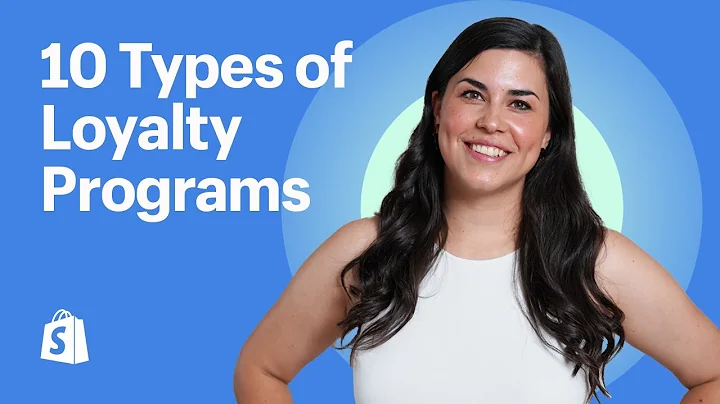Mastering LCP: Optimizing Your Website's Loading Speed
Table of Contents
- Introduction
- What is LCP?
- Why is LCP important for optimizing your site?
- How to find your LCP
- Tricks to be aware of when finding your LCP
- How to improve the loading time of your LCP
- Importance of placing your LCP at the top of the loading sequence
- Conclusion
- FAQ
Introduction
When optimizing your Shopify store, there are several factors to consider, one of which is Largest Contentful Paint (LCP). In this article, we will delve into what LCP is, how it affects your site, and how you can optimize it. We will also discuss the importance of LCP in improving the performance of your online store. So, let's dive in and explore the world of LCP optimization!
What is LCP?
Largest Contentful Paint (LCP) is a metric used by Google to evaluate the loading speed of websites. It measures the time it takes for the largest visible element on a web page to load. This element is usually an image or a text block that is immediately noticeable to visitors. Google considers LCP as an important factor in determining the overall speed and user experience of a website.
Why is LCP important for optimizing your site?
LCP plays a significant role in optimizing your site. Google assigns a considerable weightage to LCP when calculating the performance score of your website. On both mobile and desktop versions, LCP contributes to approximately 25% of the total score. Therefore, improving your LCP directly impacts your store's optimization, making it a crucial aspect to focus on.
How to find your LCP
To find your LCP, you can use the Google Chrome browser's built-in tools. Right-click on your website, select "Inspect," and navigate to the "Performance" tab. After refreshing the page, the performance report will display all the elements of your website. Look for the LCP entry, hover over it, and it will show you the specific element that Google considers as your largest contentful paint.
Tricks to be aware of when finding your LCP
Finding your LCP can be tricky, as Google scrapes the code of your website to make an educated guess. Sometimes, the element that appears to be the largest content is not necessarily the actual LCP. For example, if you have a pop-up that shows only on the first visit, Google may consider it as the LCP even if it is not currently visible to you. To overcome this, it is advisable to ensure your pop-ups only appear after user interaction to prevent them from affecting the LCP calculation.
How to improve the loading time of your LCP
Once you have identified your LCP, you can take steps to improve its loading time. Firstly, prioritize the loading sequence of your website elements, ensuring that the LCP loads first. This means that other elements, such as social media widgets or secondary apps, should load after the LCP. By placing the LCP at the top of the loading sequence, you can ensure it appears promptly when a user visits your site.
Importance of placing your LCP at the top of the loading sequence
Placing your LCP at the top of the loading sequence is crucial for a seamless user experience. When visitors land on your website, the LCP should be among the first elements they see. This helps create a perception of fast loading speed and enhances user satisfaction. On the other hand, if your LCP appears late in the loading process, it may create a perception of slow loading speed and impact user engagement.
Conclusion
Optimizing the Largest Contentful Paint (LCP) of your Shopify store is of utmost importance to improve its performance. By understanding what LCP is and its significance, you can take the necessary steps to find your LCP and enhance its loading time. Placing your LCP at the top of the loading sequence ensures a smooth user experience, ultimately leading to increased customer satisfaction and higher conversion rates.
FAQ
Q: What is the purpose of LCP in website optimization?
A: LCP, or Largest Contentful Paint, is a metric used to evaluate the loading speed of a web page. It helps optimize a website by measuring the time it takes for the largest visible element to load.
Q: How do I find the LCP of my website?
A: You can find the LCP of your website by using the Google Chrome browser's built-in tools. Right-click on your website, select "Inspect," and navigate to the "Performance" tab. After refreshing the page, the performance report will display all the elements of your website, including the LCP.
Q: How can I improve the loading time of my LCP?
A: To improve the loading time of your LCP, prioritize its loading sequence. Ensure that the LCP loads before other elements, such as social media widgets or secondary apps. By placing the LCP at the top of the loading sequence, you can enhance its visibility and improve the overall loading speed.
Q: Why is it important to place the LCP at the top of the loading sequence?
A: Placing the LCP at the top of the loading sequence is important because it ensures that it appears promptly when a user visits your website. This creates a perception of fast loading speed and enhances user satisfaction.
Q: Can pop-ups affect the calculation of the LCP?
A: Yes, pop-ups can affect the calculation of the LCP. If a pop-up appears on the first visit but is not currently visible, Google may still consider it as the LCP. To prevent this, it is advisable to ensure that pop-ups only appear after user interaction.
Q: How much does LCP contribute to the overall score of a website's performance?
A: LCP contributes approximately 25% of the score in both the mobile and desktop versions of a website's performance. It is a significant factor in optimizing the overall performance of a website.






















